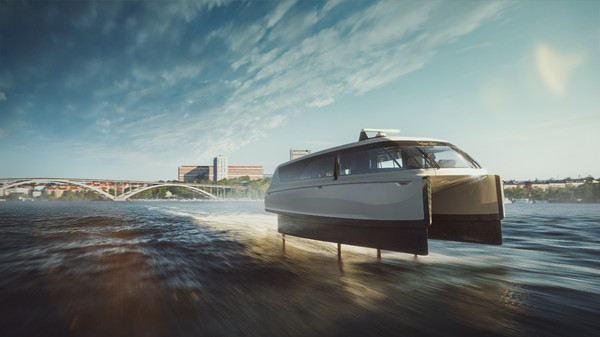The race to greener transport is well underway in Sweden, with the city of Stockholm on course to be running electric autonomous car ferries across the archipelago by mid-2024. The Swedish capital is also set to pilot an electric hydrofoil commuter ferry later this year.
Last autumn, the Swedish Transport Administration, Trafikverket Sweden, signed a deal with Holland Shipyards Group for up to four autonomous all-electric car ferries – including auto-mooring facilities and charging stations. Electric-powered and rechargeable whilst mooring, they will have backup engines running on HVO, an environmentally friendly diesel substitute.
The 60-car capacity ferries will also be autonomous, defined as class 2 under the IMO’s classification system. That is, they will be remotely controlled from a centre in Stockholm, activated by the simple pressing of a button, but will still have a crew on board empowered to take over control if needed.
The first ferry, scheduled for delivery in the second half of 2024, will run between Ljusteröleden and Vaxholmsleden in the Stockholm archipelago.
Electric transport has been a familiar sight for some time but will take another step forward later this year as the Region of Stockholm will run a nine-month pilot of the P-12 Shuttle, a 30-passenger electric hydrofoil ferry, built by marine technology company Candela. The silent, carbon-fibre wing shuttle has a service speed of 30 mph. It uses a computer for active electronic stabilization, regulating the hydrofoils 100 times per second to eliminate any wake, which, the makers claim, also eliminates sea sickness.
Fully chargeable in an hour, the P-12 uses 80% less energy than conventional vessels and will run between the Stockholm suburb of Ekerö and the main city centre.
From an insurance perspective, the key risks are lithium-ion batteries’ well-documented fire and contamination issues. In particular, there is a need to ensure a comprehensive understanding of the specific cooling/fire extinguishing procedures in the event of an incident, which also needs to be supported by specialist training, – and equipment – for crew members. In terms of automation, outside of cyber-attack, the main challenges are around the training of the system itself with regard to the many potential situations it could face - such as an elk swimming in the water, though perhaps outside of the Nordic countries, this may not be such an issue.
